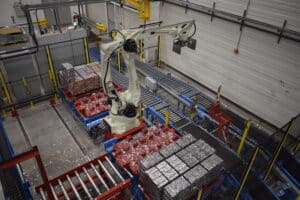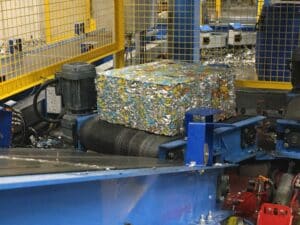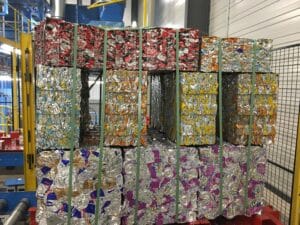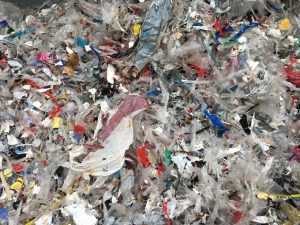As with all modern production operations, the focus is often on production efficiency, increased output and reduced energy consumption, but one area that is often overlooked is the scrap handling system itself.
Scrap handling systems that collect waste material from a cupping press, bank of body maker trimmers or whole reject production spoilage, and then convey it through a pneumatic ductwork circuit to a hydraulic bale press are simple enough and can be found in every beverage can facility across the globe. However, in many instances, a lack of understanding from the end user or plant designer about the influence of the overall conveying distances, layout of the system and sensible conveying velocities in the ducted circuit can often result in unnecessarily high annual running costs for the waste recovery fans, which form an integral part of the scrap handling solution.




Industry specialist Dave Lansdell, Technical Sales Director for Impact Air Systems, has designed scrap handling and conveying systems in some of the world’s most prestigious can making facilities. Lansdell explains that “a recent survey of scrap systems uncovered the effects of a poorly considered location for the main scrap handling equipment, ductwork route and layout and number of simultaneously operating collection points. When looking at energy consumption, it was found that poor system design meant that running costs for a typical 45kW or 60hp waste fan was around 30% higher than necessary (based on 8,400 running hours and kWh unit cost). Fan motor power requirements calculated simplistically are a function of air volume and pressure required to overcome the circuit resistance. If either one of these are not well considered, it can have a significant influence on the size of the fan motors required and the associated running costs.
Air velocities recommended to convey typical beverage can scrap vary slightly depending on the size, shape and quantity of material being transported through the circuit. However, as a broad rule of thumb, most scrap conveying circuits will operate without issue at 28m/s (5,500fpm). We regularly encounter systems installed by other companies where conveying speeds are far in excess of this figure. Simple modifications and upgrades are one way to combat this for existing systems.”
In recently awarded scrap conveying and bale handling projects, Lansdell has also worked with robotic handling suppliers and can manufacturers to create an efficient, cost saving bale handling robotic palletising cell design, taking into consideration logistical activities during the recycling process once the bales leave the plant. Usually, scrap bales are stacked on a wooden pallet, strapped and removed from site like any other waste material. However, this doesn’t always provide the most economical payload in transportation from the plant to the recycler, nor does it take into account the additional handling required by the recycler once the scrap bales arrive at the recycling facility, such as removing the bales from the wooden pallet.
One of the key elements of the latest palletising cell allows finished bale stacks to be transported away from the plant without using wooden pallets. A carefully considered bale stacking pattern was determined through vigorous trials and tests to provide a robust, stable bale stack that includes voids to allow a standard fork truck to lift and transport the finished stack from the cell and into a road vehicle. The pattern also ensured a maximum vehicle payload in terms of weight was achieved.
“These examples of innovative engineering and logistics and transport efficiency contribute greatly towards minimising the carbon footprint of the can manufacturing process. We continue to focus on system efficiency and cost-savings for the scrap handling process and ensure this is passed on to our customers.”
To find out more and to discuss your requirements, call us on +44 (0)116 2448855 or email sales@impactairsystems.com.
